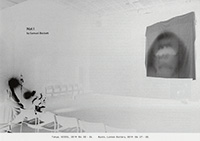 |
Picks is a monthly sampling of Japan's art scene, offering commentary by a variety of reviewers about exhibitions at museums and galleries in recent weeks, with an emphasis on contemporary art by young artists. |
 |
 |
 |
2 September 2019 |
 |
| 1 | 2 | |
 |
|
 |
 |
|
|
 |
 |
| The Eye of a Connoisseur: The Legendary Hara Sankei Collection |
| 13 July - 1 September 2019 |
Yokohama Museum of Art
(Kanagawa) |
 |
| This show makes a good case for the "legendary" aspect of the art collection of Yokohama silk baron Sankei Hara (1868-1939). Born into a wealthy farming family, Hara learned painting and poetry from his maternal grandfather and uncle, both classical Chinese-style painters in their own right, and was no slouch as a painter himself. So his collection is not the typical rich man's accumulation of works recommended by hired experts, but reflects his own indisputably discerning tastes. |
|
|
 |
 |
 |
| May I Start? Hirofumi Kera's Cross-Border Hair & Makeup |
| 6 July - 1 September 2019 |
The Museum of Modern Art, Saitama
(Saitama) |
 |
| Kera (b. 1971) is arguably Japan's most celebrated hairstyling and makeup artist. Members of his profession tend to be viewed as anonymous, behind-the-scenes assistants to models and actors, but this exhibition effectively demolishes that modest image: Kera's creations are true artistry. A corner displaying the tools of his trade contains not only lipstick, foundation and brushes, but soldering irons and other implements more often associated with the industrial arts. |
|
|

|
 |
 |
|
 |
 |
 |
| PGI Summer Show 2019: "mono / tone" |
| 10 July - 24 August 2019 |
PGI
(Tokyo) |
 |
| A group show by five young photographers, all exhibiting monochrome work. Even in this everything-digital age, there seem to be an inordinate number of artists who prefer working with black-and-white silver-halide prints. Even some who use digital cameras and printers choose to output their work in monochrome. Such is the enduring allure of black-and-white photography. |
|
|
|
|
|
|
|

|
 |
 |
 |
 |
| Apichatpong Weerasethakul: Fever Room |
| 30 June - 3 July 2019 |
Tokyo Metropolitan Theatre
(Tokyo) |
 |
| Part of the Japan Foundation's Asia in Resonance 2019 program, this was a work of contemporary performance art from Thailand that made novel use of the device of seating the audience onstage, not in the seats. This usually involves having both audience and actors share the stage, but here the functions of stage and seating were reversed, while video images were also projected in the opposite of their normal direction. |
|
|
 |
 |
| Sato Shintaro: Geography |
| 25 June - 13 July 2019 |
Fugensha
(Tokyo) |
 |
| Sato used an 8 x 10 large-format camera to shoot a vast unpaved lot of reclaimed land near Tokyo Bay in 1992. The concept he applied to capturing the mineral-like ground surface was to "photograph flat surfaces planarly, just as they are." In this presentation the images were enlarged to 125 x 100 cm prints. The minuscule bumps, blobs, cracks and fissures in the ground make it look like an alien planet, a tiny but unending expanse captured in detail as only a camera can. |
|

|
 |
 |
 |
 |
 |
| Dimitris Papaioannou: The Great Tamer |
| 5 - 6 July 2019 |
ROHM Theatre Kyoto
(Kyoto) |
 |
| This work marks the Japan debut of Greek director and choreographer Papaioannou, known for supervising the opening and closing ceremonies of the 2004 Athens Olympics. A collage-like production that purports to span the history of the human race across space and time, from creation to death, it alludes to the powerful gravitational pull and and oppressive structure of a Western-centric worldview, but does not venture deeper to explore its foundations. A wordless performance, it is busy with cultural references but diffuse in impact. |
|
|
 |
 |
 |
| Samuel Beckett: Not I |
| 27 - 30 June 2019 |
Lumen Gallery
(Kyoto) |
 |
| In Beckett's play Not I, a disembodied mouth floating in darkness speaks in fragments about an unnamed woman. This staging utilized an original imaging device known as a "boxless camera obscura." The point of the production was to simultaneously highlight the novelty of the device in the history of performances of the work and its self-referentiality as an imaging medium. But how did this relate to the bound state of the protagonist's body, or the oppressive nature of her circumstances? Other, more critical possibilities loom beyond the immediate objectives of this particular production. |
|
|
|
|
|
|
|
|
|
 |
|